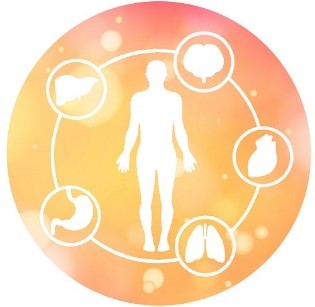Treatment using growth factors and other proteins
 In order to replace cells that have been damaged due to injury, illness, or aging, our bodies have the ability to create and replenish new cells from stem cells. Stem cells have the ability to differentiate into various cells such as bone, skin, blood, nerves, and heart muscle.
In order to replace cells that have been damaged due to injury, illness, or aging, our bodies have the ability to create and replenish new cells from stem cells. Stem cells have the ability to differentiate into various cells such as bone, skin, blood, nerves, and heart muscle.
Cytokine therapy is a new treatment that aims to regenerate aging and damaged tissues by administering self-healing growth factors and cytokines that are secreted by stem cells. It is considered a cell-free regenerative medicine because it utilizes materials contained within the stem cell culture fluid (supernatant), rather than the stem cells themselves.
Cytokine purification and enrichment from human dental pulp stem cells
There are many different types of stem cells in the body, including bone marrow stem cells, adipose stem cells, and dental pulp stem cells, which can be obtained from each site.
In particular, dental pulp stem cells have a high proliferation rate, and deciduous dental pulp stem cell culture supernatant is rich in cytokines including various growth factors that promote cellular activity. This has the ability to promote anti-inflammatory effects, angiogenesis, and can induce growth from stem cells already present in the body.
Our cytokine therapy uses a concentrated solution obtained by purifying the culture supernatant from human deciduous dental pulp stem cells. The supernatant is purified, so that it does not contain stem cells, expired cells, proteins from expired cells, cellular waste products, selenite, phenol red, or antibiotics.

Targeted medical conditions and symptoms
Sequelae of injury or cellular aging from of cerebral infarction, Alzheimer’s dementia, heart disease, liver disease, lung disease, diabetes, rheumatoid arthritis, atopic dermatitis, hay fever, and various skin conditions.
An anti-aging effect can also be expected.
Treatment flow
- Initial medical consultation
Our physicians will consult with patients and in order to understand the patient’s full information impacting treatment including the patient’s medical condition, treatment history, and current physical information, and fully explain cytokine therapy. We will consult with the patient to determine the method of administration and the treatment schedule. - Method of administration
Administration is by either intranasal instillation or intravenous infusion. Generally, a treatment course of 4 to 6 treatments within a 1 to 2 week interval is considered. The number of treatments, treatment intervals, and dosages are adjusted according to the conditions treated and the patient’s symptoms. - Evaluation of treatment and follow-up
Therapeutic effects of the treatment usually appears gradually over several weeks to several months, with some individual differences.
Follow-up appointments should be made approximately once a month in the 3 months after the treatments to confirm that there are no abnormalities.
Side Effects
After treatment, symptoms such as fever, redness, rash, pruritus, or subcutaneous bleeding may occur temporarily, in most cases disappearing within hours or days. If you have any concerning symptoms, please consult with our doctors.
Treatment precautions
If you have a history of atopic dermatitis or seasonal allergies, please let us know in advance.
